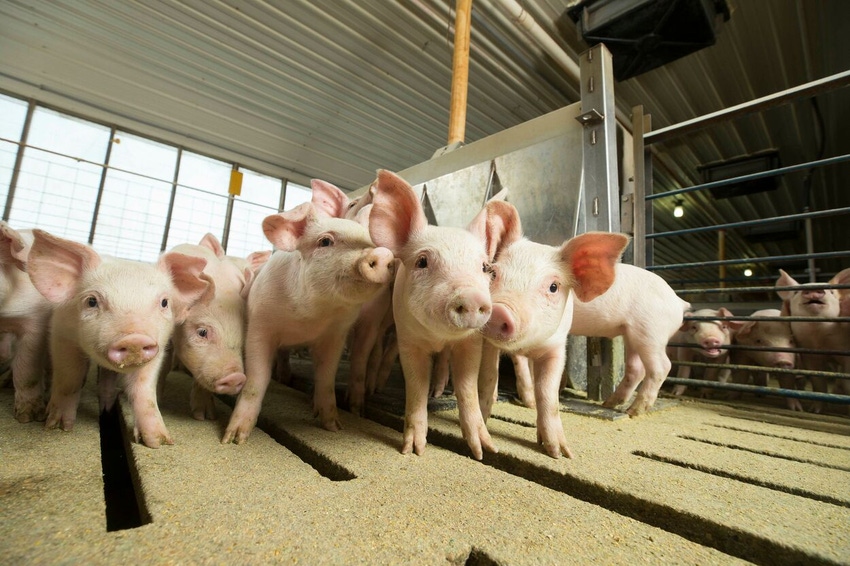PRRS depopulation popularity
Farms with no detected recombination events had 1,827 fewer piglet losses per 1,000 sows compared to farms with greater than three PRRSv strains.

Typically, we are taught that you shouldn't respond to aggression with aggression — it usually just escalates the situation. However, PRRS may need to be treated as an exception to that mantra, based on its continued surge and evolution in our industry.
The picture of PRRS is 'cloudy'
As further developments in monitoring and reporting strategies continue to evolve, so does the picture of PRRS. Dr. Daniel Linhares and Dr. Giovani Trevisan of Iowa State University recently completed a paper with Dr. Gustavo Silva reviewing new field study findings.
A facet of their study included completing whole PRRSv genome sequencing on farms experiencing an outbreak to determine what those farms were truly battling. Surprisingly, they found that 90% of the farms they sampled were facing multiple PRRSv strains simultaneously, with some showing evidence of 4-plus strains.
The research team describes this occurrence as a diverse "cloud" of PRRSv that is co-circulating and ever-evolving. "There is no such thing as 'the' virus — or one homologous virus circulating," Dr. Linhares said. "It is expected that anyone dealing with PRRS is dealing with a family of PRRS, sometimes very related and sometimes not at all."
The bounce back rate
When facing an outbreak and working toward recovery, we are often evaluating time-to-stability, defined as the weeks it took from the outbreak until consistently producing PRRSv-negative pigs at weaning. The key metric under the microscope here is pig losses during this time.
Iowa State's research highlights a number of factors that shortened time-to-stability and decreased production impacts. A few of note are:
Herd closure increases the success rate of achieving stability.
Herds intentionally targeting to reach a "negative" status were twice more likely to achieve stability (80% versus 40%) compared to herds targeting to reach low prevalence but not necessarily clearing the virus.
Farms having relatively higher genetic variability (three or greater PRRSv strains) had a 12-week increase in the average time to achieve low prevalence compared with herds with two or less strains detected.
Farms with no detected recombination events had 1,827 fewer piglet losses per 1,000 sows compared to farms with greater than three PRRSv strains or detected recombination events.
The stakes are high
Knowing what you are dealing with, and what overall impact you could be looking at, will be critical in deciding what combative path you want to take. Therefore, our recommendation is that anybody with a breed-to-wean farm going through a PRRS outbreak should probably have whole genome sequencing completed. By even retaining samples, we can sequence if and when we need to for follow-up questions, or unexpected results.
Serum tends to be your gold standard to achieve results, especially in cases of PRRSv with low CT values. Another useful test is lung tissue sampling, or a newer approach is using tongue-tip fluids from dead pigs. RNA detection in tongue tips has similar sensitivity to that of process fluids, serum and family oral fluids. The ISU researchers report that this method is "handy when there is an unexpected drop in CT values of PCR results from processing fluids, serum of family oral fluid samples and also when there is an atypical long duration of PCR positive results." This approach on stillborns can help you determine if the infection originated with the breeding herd (vertical transmission) or the farrowing house (horizontal transmission).
"Each sampling approach serves to address a specific question," added Dr. Linhares. "For example, processing fluids are great for screening whole-herd viral activity. Family oral fluids are to verify the PRRSv activity in weaning-age pigs, serum is ideal for completing whole genome sequencing and tongue tips are for assessing vertical transmission."
Depop and repop
Evaluating this option can be a hard pill to swallow because of the cost involved, but as we continue to see PRRS cause devastation at the sow farm level, leading to losses throughout the rest of the production segments, we should bring this tactic to the table for consideration.
Understandably, there is some deep economic pain up front, but it takes the ambiguity out of the situation. Herd closure success timelines aren't clearly defined, which causes uncertainty when you haven't brought in or bred gilts in weeks, making it challenging to stick with the program for long enough to eliminate the virus.
Depop and repop isn't the answer in every situation, but you get a more certain outcome and timeline. If you've already endured a year of unsuccessful elimination attempts, this may be the best option.
Final thoughts
PRRS has become a fact of life for many producers, and it's tempting to just try to live with it rather than keep combating the virus. However, research has shown, and continues to find, that high prevalence viruses and multiple strains lead to great losses.
PRRS also notoriously causes immunosuppression in herds, so it is opening the door to other infections that you previously had under control. Unfortunately, the many strains of this virus can manifest itself in different ways clinically wreaking havoc in each production segment.
All that said, we have to continue to work to keep PRRS at bay because the implications of not doing so are too great for individual producers, and the industry as a whole.
Clayton Johnson, DVM, is one of the swine health experts at Carthage Veterinary Service who rely on science and experience to provide unique and practical solutions to achieve the best outcomes for producers and their animals.
About the Author(s)
You May Also Like





